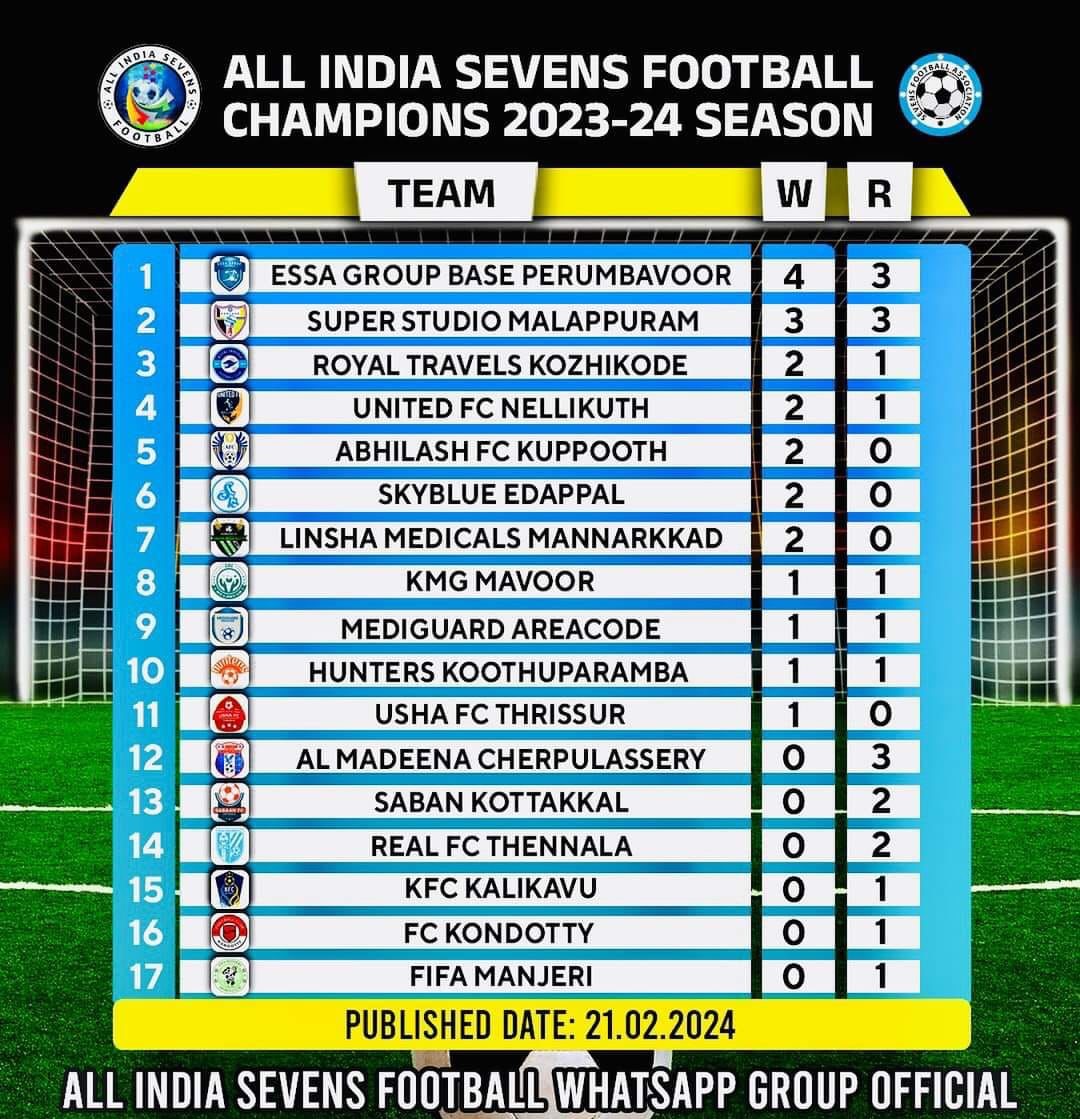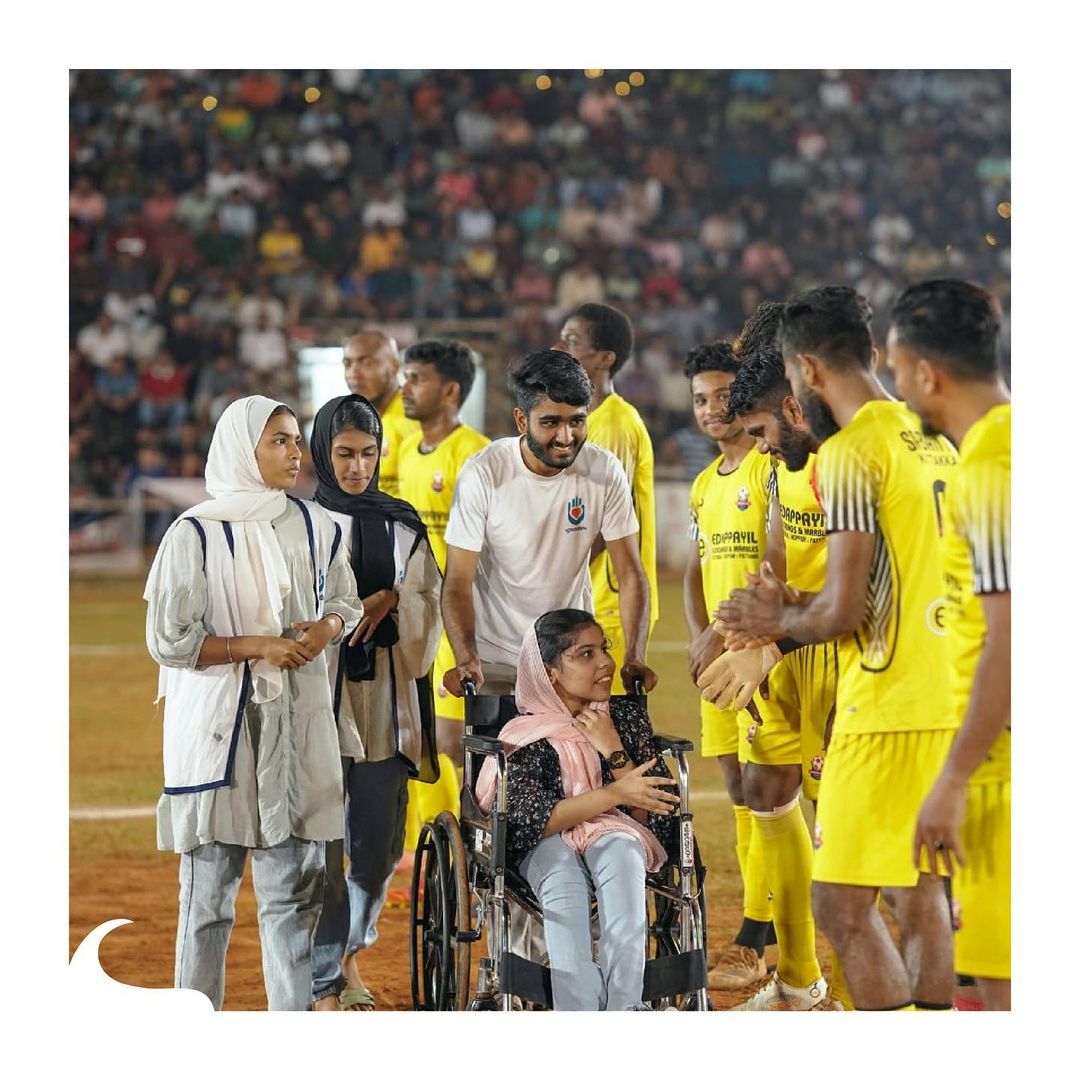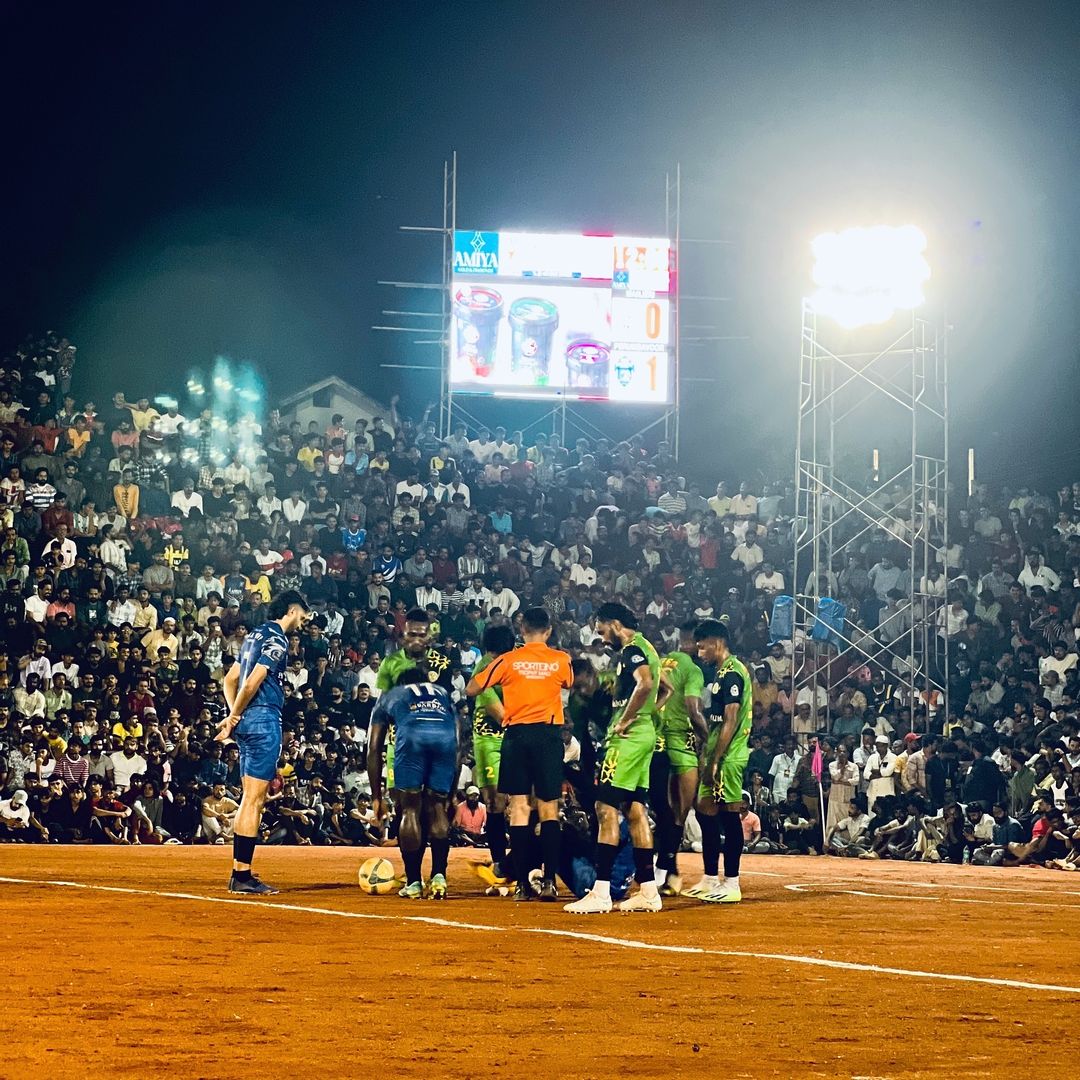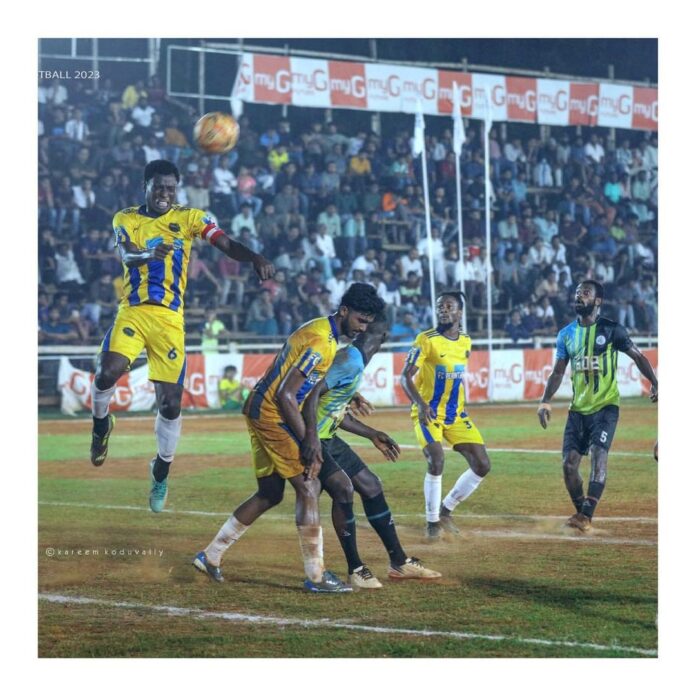Grace Mubashir, TwoCircles.net
The December weather in Northern Kerala is humid and soakingly sizzling. Askar Vandithodi, a 33-year-old IT official by profession and loyal fan of football attends a peculiar Kerala version of football.
All passages to the make-shift stadium in Malappuram district are decorated with life-size posters of rival teams and players. The gallery is filled to the brim and spectators are hooting and cheering incessantly. The mud football ground in the middle is recently manicured and marked with fresh chalk powder. Here, two teams with seven players on each side are sweating out to ram through defenses and score goals.
After three years of Covid-induced shutdown, Sevens Football is back to ubiquitous vigour in Kerala from 2023.
Colonial genesis of Football rage
Northern parts of Kerala, known as the Malabar region, are well known for their football mania where football kicked off a psychological resistance against colonialism. Football was introduced by the British in Malabar when an armed battalion of Malabar Special Police was raised in the 19th century to deal with rebellious native Mappilas. Mappilas were an agrarian community predominantly living in North Kerala, part of the erstwhile Madras Presidency.
Watching the British play the game, some were inducted into the team as substitutes and rookies to balance the numbers of the teams. Awed by the intensity of the game and the cheap availability of sports gear, compared to polo and cricket, made football more popular.
After the devastating 1921 Mappila Rebellion, British employed the football to reach out to the aggrieved Mappila community, hostile towards the government for its violent reprisal of rebellion. According to eminent journalist and author V. Musaffar Ahmad, the British successfully made inroads into the wounded minds through football diplomacy. And thus the steady growth of football.
From ballboys to formidable rivals, soon Malabar football advanced. Oldtimers still revel in the memories of homegrown barefoot team thrashing the British in the 1940s.
Innovative, indigenous sports format
This football format is an ingenious innovation to suit the geographical and sports needs of the people. This style of football is conveniently modified according to local needs.
Seven-people strong rivals compete with each other, to reach the knock-out stage and to semi-final and final.
Around 50-60 Sevens Football tournaments are held every year in Kerala between November and April. Out of these, 15 to 20 tournaments are held under the banner of the Sevens Football Association.

The tournament period starts by the end of the paddy harvest and stretches into the onset of monsoon by June. Even though agriculture has lost its patrons in the region and only small tracts are cultivated, the timing of the tournaments is a nostalgic throwback to the agrarian connection the Sevens has in Kerala.
Typical mud ground is 35-40 meters in width and 55-60 meters in length. Unlike professional football, the offside trap rule is more lenient to give the match an attacking charm.
Along with legendary clubs, every year new clubs join the fray. Some clubs like Super Studio Malappuram, AL Madeena Cherppulessery, and FIFA Manjeri, have more than three decades of annual presence, courting them die-hard fan base.
“Footfalls will be huge when teams like Real FC Thennala and Al Madeena Cherppulasseri play. These teams have traditional fanbase due to successive impressive runs in recent years”, said Vandithodi.
‘Football is a religion’
The entire football festival is locally managed without any government support. Tournament committees are formed after deliberation and the local people wholeheartedly back the event from beginning to end.
The matches are not profit-oriented. Many tournaments are conducted to support the palliative and charity efforts of the locality.
Tournaments are local festivals of harmony and recreation. Here, football seeped into the inner fabric of people and is a hereditary trait coursing through the arteries of society and culture.
Religion and politics blur in the Sevens hysteria. “For the people of Kerala, especially in Malabar, football is a religion; a phalanx of icons from Maradona and Pele to Neymar and Messi are the gods”, noted sports journalist Jaffer Khan in his book documenting football history in Malabar.

Football culture is intrinsically imbued within the everyday lives of North Kerala people. From sandy beaches and laterite quarries to splashy water bodies to verdant fields football is a conspicuous sight. In summer, football is played on rough terrains whereas monsoon ushers drenching mud football.
The sheer excitement of chasing football cheering on the players or dishing out money for sports never wavers.
For buffs like Bava Ashraf, popularly known as Super Bava after the football club he founded in Malappuram, football engulfs the whole life. Started as a ferocious central back in the 1980s, Bava now runs Super Studio Malappuram Club, one of the most successful Sevens clubs in Kerala.
Football providing employment to locals
Seven Tournaments are local festivals with parallel economy. “Tournaments directly and indirectly employ a lot of people. Players, referees, gallery builders to live streamers to hawkers are part of this football grid. A fisherman or autorickshaw driver in the day, fastening laces in the night is a common sight here”, said Asker.
Furthermore, Sevens at night is relaxation. People after the hard toil of the day, rush to the grounds to get carried away in the wizardry of football.

According to P.P Jihad, who manages a football team in Delhi named ‘Malabar Makhani’, the sheer physical intensity and swiftness of the Sevens format captivate the people. He equated Elevens to test matches, Nines to ODI, and Sevens to Twenty20.
A fan of the sport told Two Circles that their lives revolve around football. “From childhood, our life is woven around football. We run from the crack of dawn to the ground and spend there until darkness shrouds us. Then we chat and squabble about football. People from all generations mingle easily in the magic of football here” boasted Nifad, a Gen Z from Therattammal village.
Springboard for professional football career
Sevens Football is a prelude to a professional football career. Many past and present players of professional football were part of this local football festival. I.M Vijayan, star of Indian football chiseled his skills as a Sevens player for various teams, before making a foray into the national team. Former Indian players like U. Sharafali, Asif Saheer, and Noushad started their careers in the rough terrains of Sevens Football.
Players from abroad compete
Another major attraction of the game that draws many eyes and mints money at ticket counters is the glossy presence of foreign players, mainly from Nigeria, Ivory Coast, Ghana, and Senegal.
Players are scouted through agents and brought into Kerala on contracts. Some players are successful enough to carve out an everlasting niche in the lingering public football memory. Suhaib Hamza from Mannarkkad fondly remembered his childhood heroes Francis and Junior Francis who had a dreamy run between 2012 and 2018, playing for FIFA Manjeri.
According to Sevens Football Association rules only three foreign players can play in a match. “The playing prowess of foreign players adds romance to the events. Plus, it also improves the overall quality of the game” opined Asker.
In dire need of overhaul
Without government support and recognition by football associations, Sevens is in dire need of critical interventions.
“Football grows not seasonally. To have a vibrant football culture permanent stadiums are necessary. Around such stadiums, coaching academies could be opened to professionally train coming generations,” said Jihad.
Still, Sevens is the exclusive space of males, frowning the presence of women in galleries. Although some changes are visible through an increasing number of women spectators, this sport is still patriarchal entertainment as games are muscular.
Grace Mubashir is a freelance journalist based in Delhi, India.


